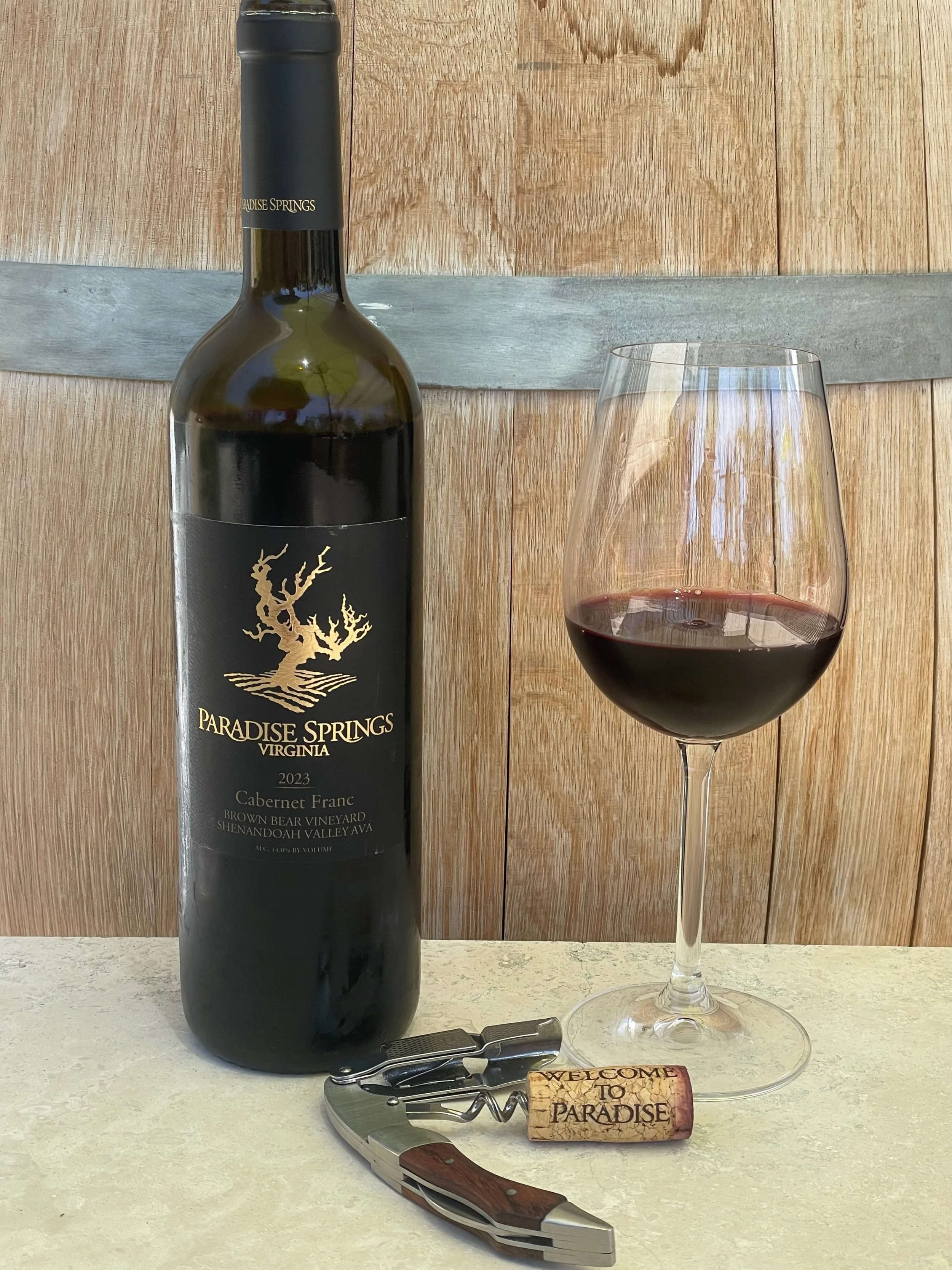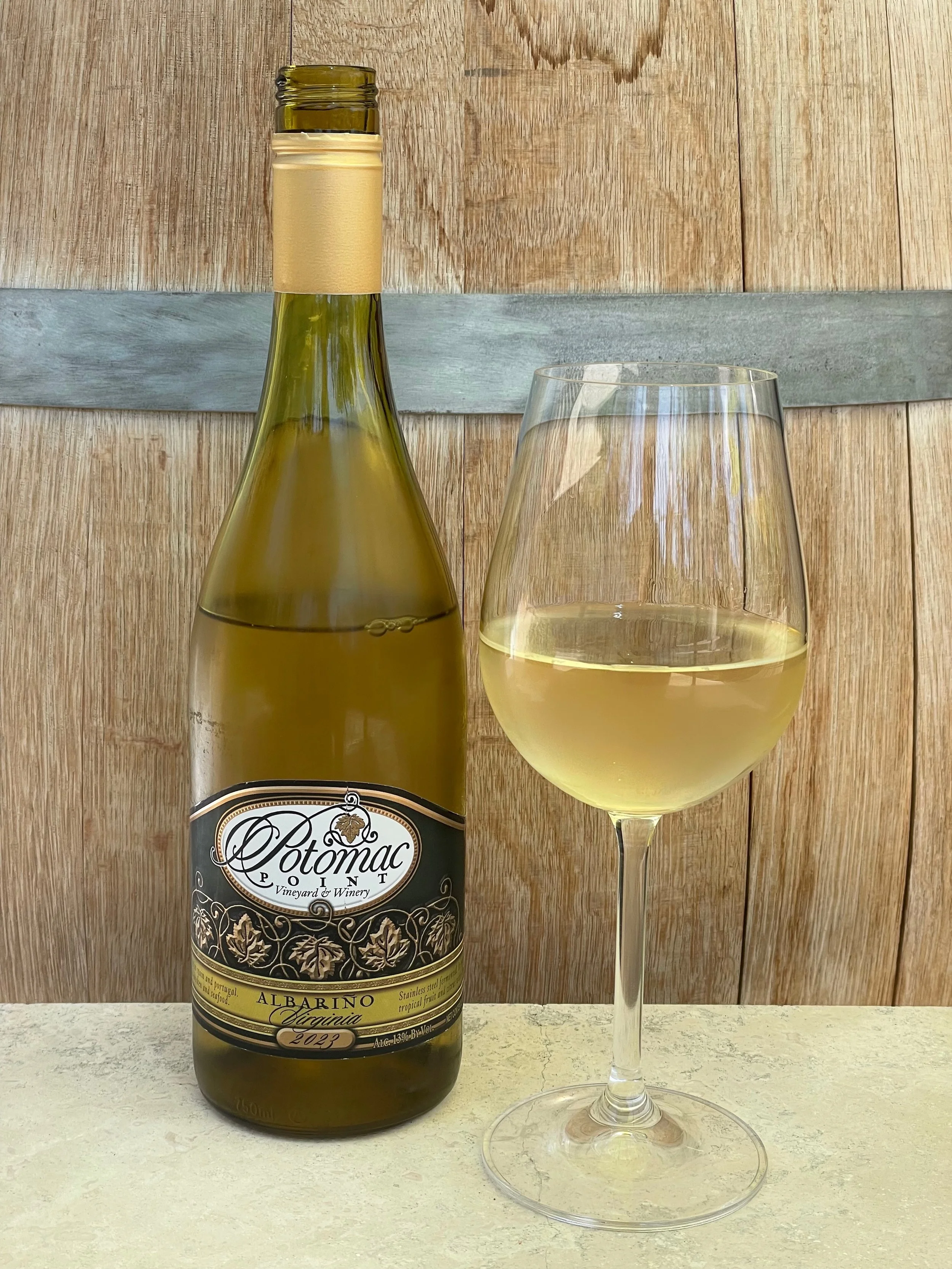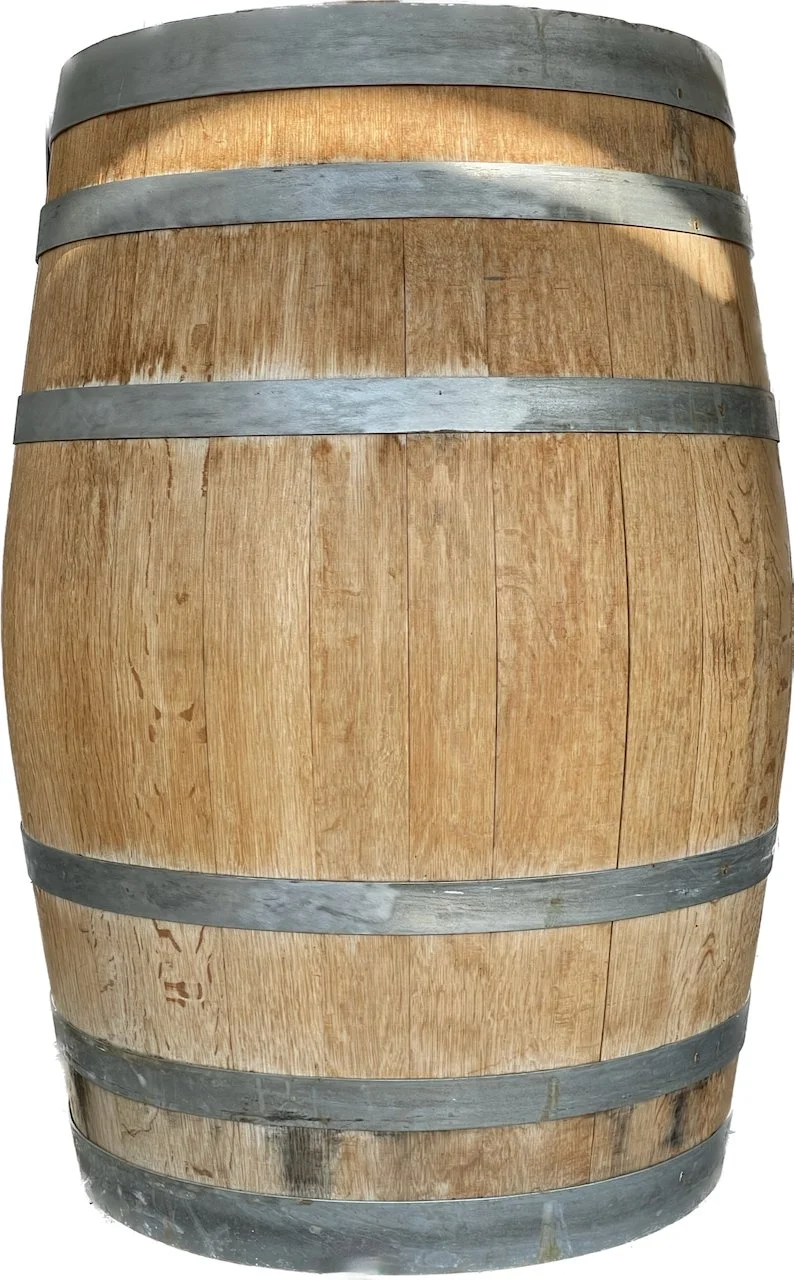2023 Paradise Springs Cabernet Franc ($42)
Located in the town of Clifton, VA and bordering the Bull Run River, Paradise Springs is the closest winery to Washington DC and the first in Fairfax County. The property was originally part of a land grant from Lord Fairfax in 1716.
The Paradise Springs Brown Bear Cabernet Franc comes from the Brown Bear Vineyard, located in the Shenandoah Valley AVA on the eastern side of the Blue Ridge Mountains. This site sits at an elevation of 1,100 to 1,500 feet.
Produced from 100% Cabernet Franc, the grapes were de-stemmed and placed into fermentation bins, where they were heated in a warm room and inoculated with yeast. Fermentation lasted 14 days before the wine was pressed. It was then transferred into barrels, where it aged for 8 months in a mix of new and neutral French oak barrels.
This Paradise Springs Cabernet Franc is medium ruby in color with delicate aromas of black cherry and plum. On the palate, this medium-bodied wine has flavors of cherry, raspberry and blueberries, with medium tannin, medium acidity and an easy finish.
Paradise Springs Cabernet Franc is another winner of the Virginia Wine Governor’s Cup and included in the winner’s case. It’s a very nice wine at an affordable price making it a great fit as this week’s Behind the Cork™ Wine of the Week. Cheers!
Disclosure of Wine Sample Submission: I received this sample at no cost for review.
Media Sample Provided by Paradise Springs Winery, Virginia Wine and Donna White Communications






